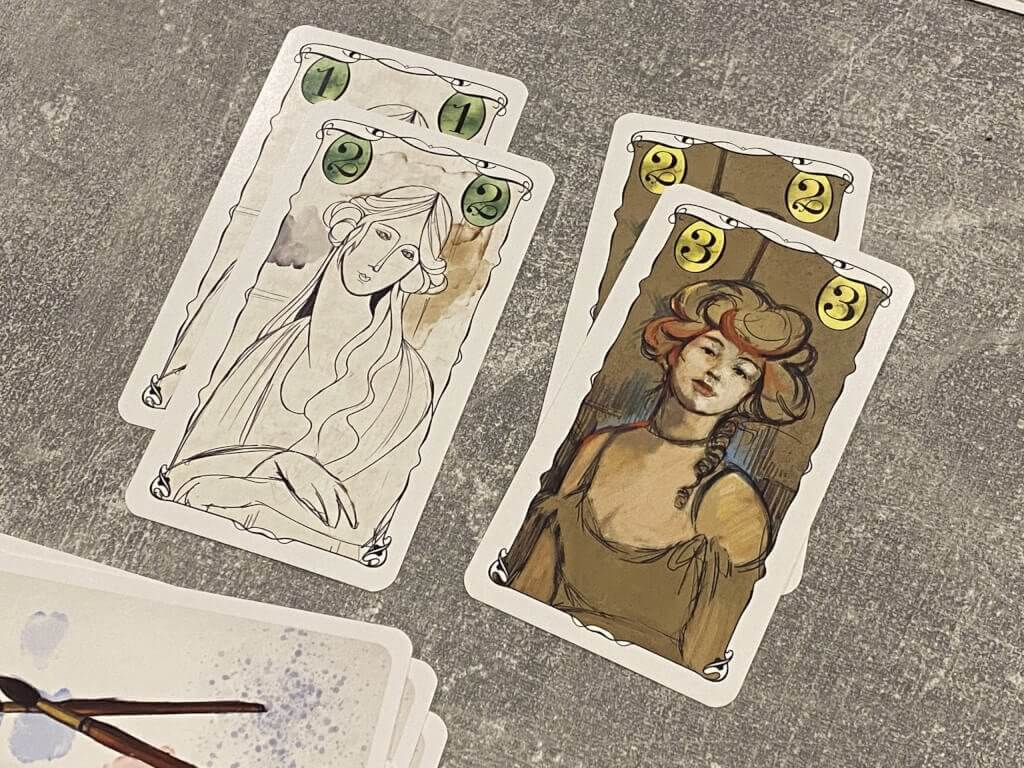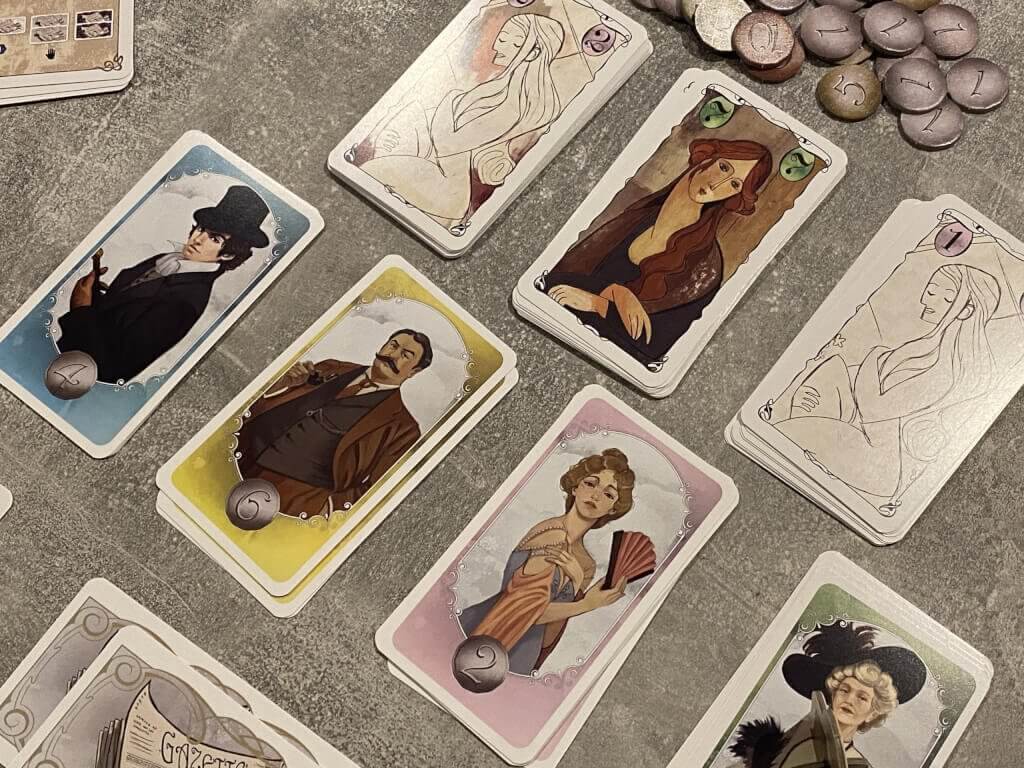In Montmartre, aspiring artists compete for the favour of discerning collectors
I have often found that art is an underutilised theme for board games, especially since good artwork is so critical to the presentation of games these days. The last art-themed game I played was the light eurogame Atelier, but now I’ve got my hands on another; a set collection game called Montmartre.
Montmartre supports two to four players, although the two-player variant requires a few tweaks to the rules to create a basic AI player who helps ensure a bit of competition. At its heart, Montmartre is kind of a set collection game, although it doesn’t really play like one.
Each player takes on the role of an aspiring artist in the French suburb that shares the same name as the game itself. With a starting hand of four artwork cards, the players will decide between three actions each turn — to sell art (essentially discarding cards for coins), to place art in a collection (by putting it face up in front of them) or attract a collector.

This latter action is the main method of scoring points, although each coin is also worth one point. To understand why you might take one action over another, though, I should tell you more about how the game works. You see, ditching art for a coin at the local market is enough to help your character subsist, but it will never bring you fame and fortune — for that, you’ll need to attract a collector.
The art cards that each player is dealt (with the remainder placed in three face-up stacks in the centre of the table) feature various stages of progress on one of four artworks. The lowest numbered cards are barely even a pencil sketch outline, whilst the highest are completed works of art.
When a player chooses to sell artwork at the local market, they’ll receive just one coin per piece of art (and a maximum of two can be sold at a time) regardless of the standard of the artwork. The main use for selling art in this way is actually to ditch a couple of very low-value cards from your hand, and there are very few occasions when you’d sell higher quality art.

When it comes to the higher value cards (five, six, seven and so on) you’ll likely want to place them in your collection. This is simple enough and simply involves placing a card on the table in front of you, face up. If you have existing cards from the same set, you’ll add them to the same pile so that the total value can be seen — for example adding a six value blue card to a five value blue card will yield a total of eleven in the blue collection.
Now, in order to impress a collector and have them invest in you, you’ll need to have either the highest total points value in the matching collection or the highest total number of cards. If either of these things is true, you may take the top card from the matching collector — scoring the number of points shown. To do so, you’ll have to discard one card from that collection, which will obviously lower the value of your collection.
There are a couple of other interesting nuances. Firstly, each collector has four different rewards to give, beginning with a value of two and going up in value. This means that whilst players can pick up points with a single card during the early game, doing so will materially reduce the strength of your collection whilst not actually yielding many points.

Building out a collection and holding onto it for later in the game is a key strategy. Having said that low-value cards are often better off sold, it can be possible to use them as part of your more valuable collections in order to have a cheap option when discarding after a collector card is taken.
These interlocking ideas ë selling cheap cards or keeping them to discard, whilst also building out your collection and timing the moment to impress a collector — makes Montmartre a more interesting game than it seems. When you add to this the possibility of being able to obtain further points for collecting cards from multiple collectors, you have yet another dimension.
This second set of cards – that can be taken only when you have collector cards from two, three or four collectors begin with the highest points value and then descend, adding a racing dynamic. I really enjoy the way that Montmartre allows players to have so many outs for their cards, and in general whilst each strategy feels clever, every game remains highly competitive.

In summary then, if you’re looking for a relatively thoughtful, serene and mature looking card game that offers a surprising amount of depth, then Montmartre might be a good choice to look into. For me, there is enough variance on the standard trick-taking and hand management aspects of gameplay to give Montmartre a feel all of its own.
You can pre-order Montmartre on 365 Games.
Love board games? Check out our list of the top board games we’ve reviewed.
Comments are closed.